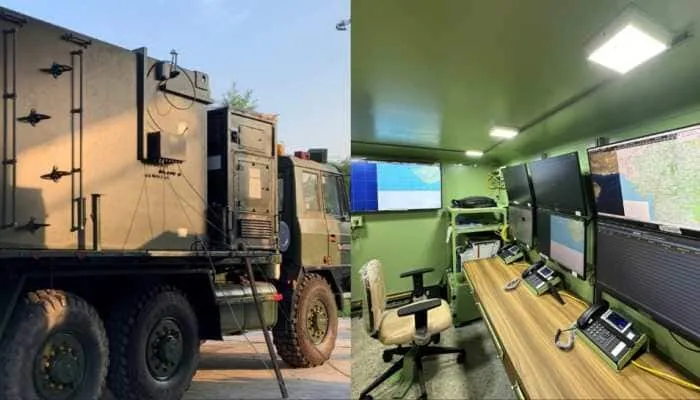In the backdrop of recently carried out by Pakistan, the state -of -the -art indigenous air defense system Akashtir has attracted national and strategic attention to its role in neutralizing and preventing air threats along the western border. The fully AI-powered system effectively drove a series of enemy drones and missiles on the night of 8-9 May, when Pakistan attacked across the coordinated border on 26 targets.
According to defense officials, Akashtir played an important role in securing Indian airspace, preventing major damage and demonstrating the nation’s technical capabilities in battlefield automation and air threats.
What is the sky?
Accelerated sky -operated air defense system jointly developed by Defense Research and Development Organization (DRDO), Indian Space Research Organization (ISRO) and Bharat Electronics Limited (BEL) is capable of real -time monitoring, detection, tracking and neutralizing enemy threats.
The specialty of Akashtir, which describes India’s own version of Israeli’s “Iron Dome” by officials, is that it is completely indigenous, there is no foreign component or external satellite dependence. It is part of India’s overall C4ISR (command, control, communication, computer, intelligence, monitoring and reconnaissance) system.
How does this work?
In the sky, high-level AI software and autonomous decision-making systems are used to detect and prevent the dangers coming without the use of human operators. This radar system, space-based inputs such as sailors and ground sensors cross-admitted from input to provide a single-source, real-time airspace image. This enables target the target in the blink of an eye against vehicles such as drones, moving weapons and cruise missiles.
According to a post by DD News, “Akashtir is capable of stopping and neutralizing hostile UAVs without using an active radar signature. It depends entirely on stealth drone tracking, satellite monitoring and AI-based decision making.”
Its vehicle-based, mobile configuration guarantees flexibility in high-risk areas. This system combines several components-such as 3D strategic radar, low-level light radar and sky missile platform-in an integrated operating command structure.
Better than Pakistan’s defense systems
The recent encounters displayed the superiority of the sky on the air defense systems of Pakistan-mainly based on the HQ-9 and HQ-16 platforms-which failed to detect or stop Indian projects during the exchange. In contrast, Akashtir stopped the dangers coming in real time, giving India a decisive lead in air defense.
The DD News report states, “With Akashtir, India has become the first non-western country to fully integrate a single war-taiyar platform to the India autonomous drone flock, indigenous satellite monitoring and AI-operated battlefield coordination.”
Better than Pakistan’s defense systems
Recent battles have proved that Akashtir is better than Pakistan’s air defense systems-it is better than HQ-9 and HQ-16 platforms, as they cannot detect or stop Indian missiles during the encounter. In comparison, Akashtir stopped the dangers coming in real time, which gave India a clear benefit in air defense.
The DD News report states, “With Akashtir, India is the first non-Western country to have a fully autonomous drone herd, native satellite monitoring and AI-based battlefields integrated into a war-capable platform.”
Strategic importance
Its deployment and success is a major achievement in India’s defense power. Its achievement reflects the change towards the next generation, AI-in-operated war systems from the traditional air defense concepts of the country.
While stress is still ongoing the Line of Control and its outside, platforms such as Akashtir are likely to be required to maintain strategic resistance and act as a major element in protecting Indian airspace with accuracy and autonomy.
